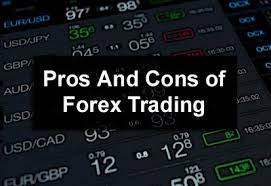Leverage is the ratio of the quantity of money in your trading account to the amount you can trade with. Leverage allows you to obtain more exposure to financial market positions with a less quantity of capital. Leverage for retail trading accounts can range from 5 times to 100 times or more, with the degree of leverage determined by several factors, including:
The traded asset: trading Forex, for example, offers greater leverage than cryptocurrency or individual stock trading.
The broker: it is up to the broker (within legal restrictions) how much leverage they supply each trader.
Your trading experience: ‘professional’ traders can obtain greater leverage than novice retail traders.
When you trade leveraged products, you deposit a set amount of money with your broker, allowing you to trade larger positions. The broker effectively lends you the balance for these larger holdings, and there is often a fee incurred if you keep positions overnight. This is known as a ‘roll’ fee since you are rolling over your position settlement from one day to the next.
Because your profit or loss is calculated based on your full-size position, the amount you gain or lose will be large compared to the amount you’ve committed to each trade. The more leverage you have, the larger the positions you can take and the wider your profit and loss swings can be. For less experienced traders, leverage levels are limited to safeguard them from blowing their entire account by being over-exposed.
Forex trading is commonly perceived as a simple way to make money, but it isn’t easy, even though it is extremely rewarding. Even though the foreign exchange market is the world’s largest and most liquid, trading currencies are very different from trading stocks or commodities. Fxcm provide both high and low leverage.
Pros of a leverage
Following are several practical advantages:
- Leverage frees up capital by requiring you to commit only a portion of the value of the assets you are trading.
- You can take considerably larger positions than you would if you traded the actual underlying asset. This implies you may get the most of your money by investing in various assets rather than limiting yourself to one or two.
- Profits are multiplied — frequently many times over.
Cons of leverage
Following are several disadvantages:
- When you trade using leverage, you forego the benefit of acquiring ownership (in the case of shares) or delivery (in the case of futures).
- If the market swings against you, you may be required to deposit more margin to cover your losses.
- Most significantly, your losses are compounded – frequently several times over, which can be disastrous for your trading account.
Conclusion:
While margin trading and leverage can provide greater flexibility and market exposure, it is critical to understand the dangers before committing leveraged funds to the markets.
I assess trading risk in absolute terms, such as risking no more than 1% of my trading account on any single transaction. As a result, my losses are kept to a bearable level. Of course, limiting your risk to 1% means that your rewards will also be limited. It is up to you how much of your account you want to risk on each trade, and for smaller trading accounts, you may choose to boost this from 1% to 5% or even 10%.
The most important thing to remember here is to keep a close grip on the amount of money you’re risking on each trade and across your entire trading portfolio. If you can do this, you’ll be able to stay in the game and keep your stress levels down.





























